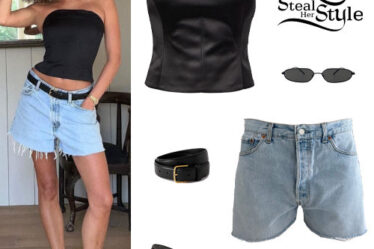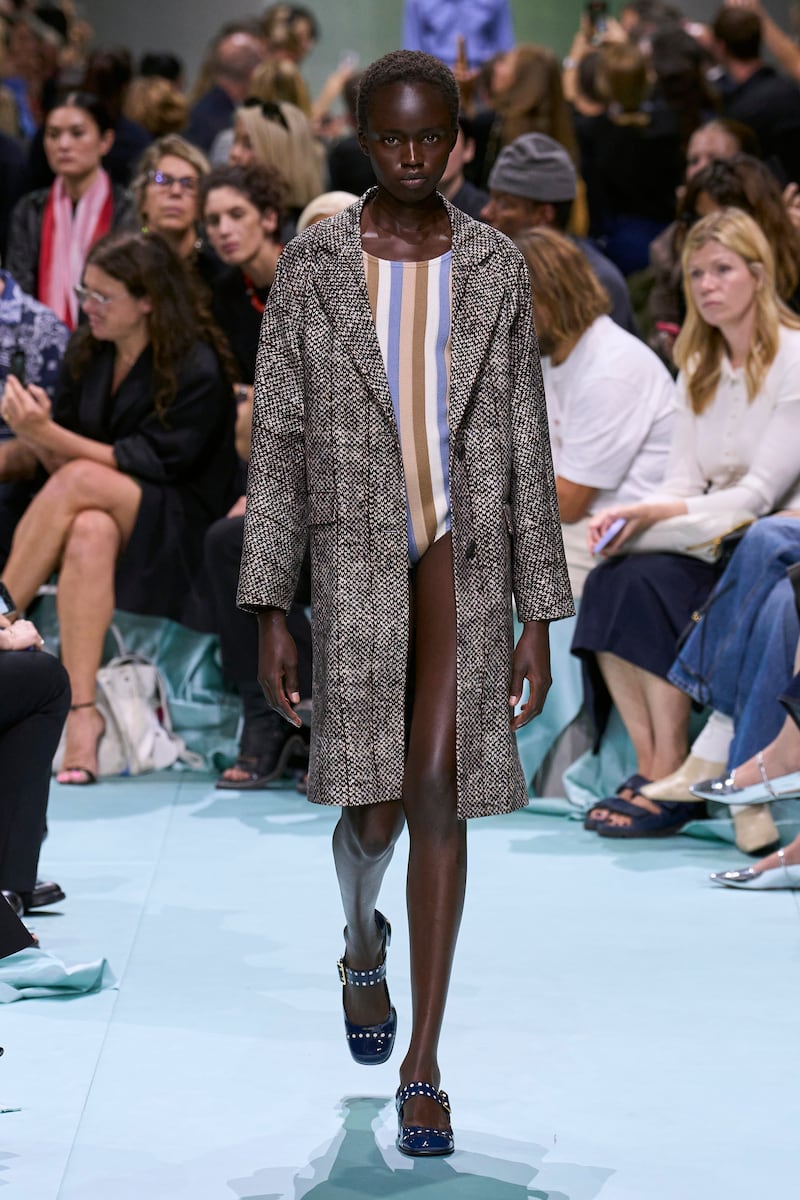
MILAN — “We are directed by algorithms,” Miuccia Prada declared after her show on Thursday. “Anything we like, everything we know, it’s because other people are distilling it into us.” Her co-designer Raf Simons added, “You look something up and it’s coming back to you in multiples.” He’s right. An overload of digital imagery is the confusing bane of the modern world. But Prada’n’Simons reckoned they’d devised an antidote with their new show. The idea was that they could manipulate the algorithm by elevating individuality into a unique, unpredictable, unduplicatible superpower. At least I think that’s what they meant.
How do you achieve such an elevation in something as formulaic as a fashion show? The simplest answer was to make each model different from the one before. And the simplest way to do that was to draw on Prada’s vast reserves of looks. But it was more subtle than “Prada’s Greatest Bits,” much more like how people used to borrow books from libraries (remember them?) and underline a sentence here and there. I particularly appreciated the re-appearance of the triple-soled brogues from Spring 2011.
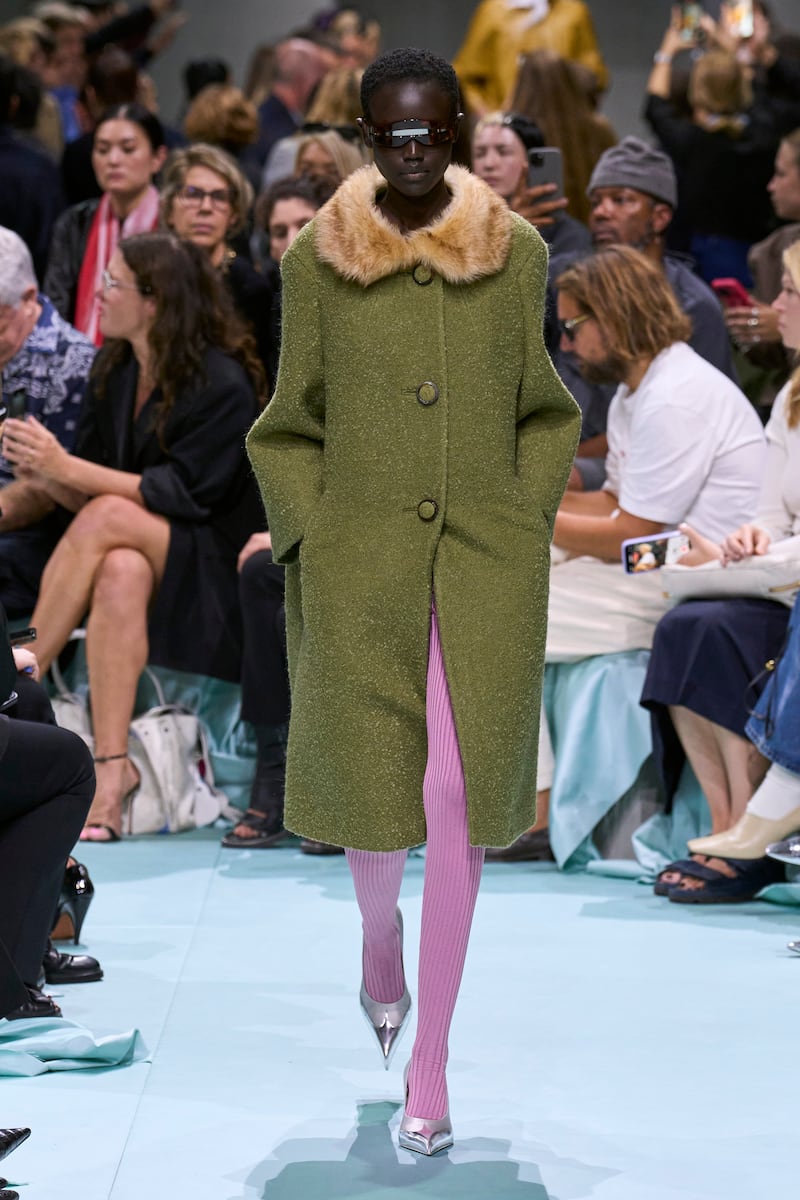
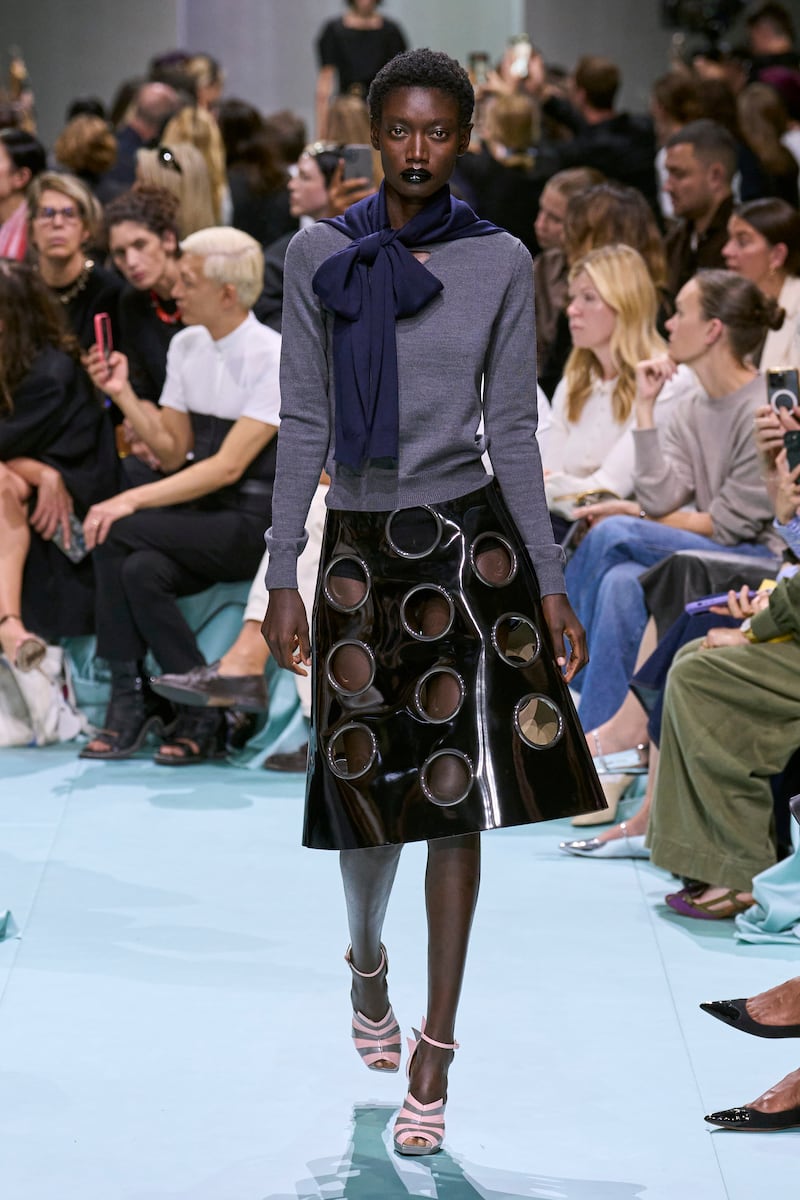
Miuccia admitted that the different approach made her much more nervous than usual (well, that and the fact that Prada has major skin in the America’s Cup currently being contested off Barcelona). Rather than the usual few themes, the new collection was, she said, about finding 50 ways of being Prada today, not one the same as the one before. That made for a kind of chaos in the actual presentation, which, in a rather poignant way, harked back to the days when Miuccia had complete control. Her thrillingly perverse knack for finding the fascinating in the banal has been missing from Prada since she joined forces with Raf. It clearly jumped ship for Miumiu. But it returned to the mothership with this collection.
Miuccia mentioned something about never throwing anything away, how old stuff could still be useful. The deshabille spirit that enlivened Prada over the years was visible from the first look, a floral slip with a drooping shoulder strap. The tweed jacket carelessly, casually thrown over a vinyl miniskirt printed with what looked like a post-apocalyptic beach scene was an early indication of the way in which every look embodied a confrontation of some kind: tweed coat vs striped onesie, fur-collared pea-green boucle coat vs Pepto Bismol pink ribbed body stocking, yellow anorak vs sheath of sequins and shattered mirrors. The challenge to orthodox desirability evoked Prada’s “ugly chic” glory days, never mind how much it flipped the bird at quiet luxury. Miuccia noted the schizophrenic aspect, but she insisted there was a thread of “superreal” that held everything together. Banality is a great common denominator.
It was gratifying to see her time-honoured mix of bracelet-sleeved propriety and pencil-skirted peculiarity back in full effect, even more so that it was consolidated by a distinct lack of the usual hair and makeup statement. An ordinary static frizz shaped the cheveux, the makeup looked distinctly non-makeup, bar a significant, single, glossy, dark lip, which felt like it was taunting the algorithm with its singularity. But so did the insectoid shades and the fullface death star visors with peepholes punched into them (there were skirts to match). Fodder to befuddle the all-seeing eye.
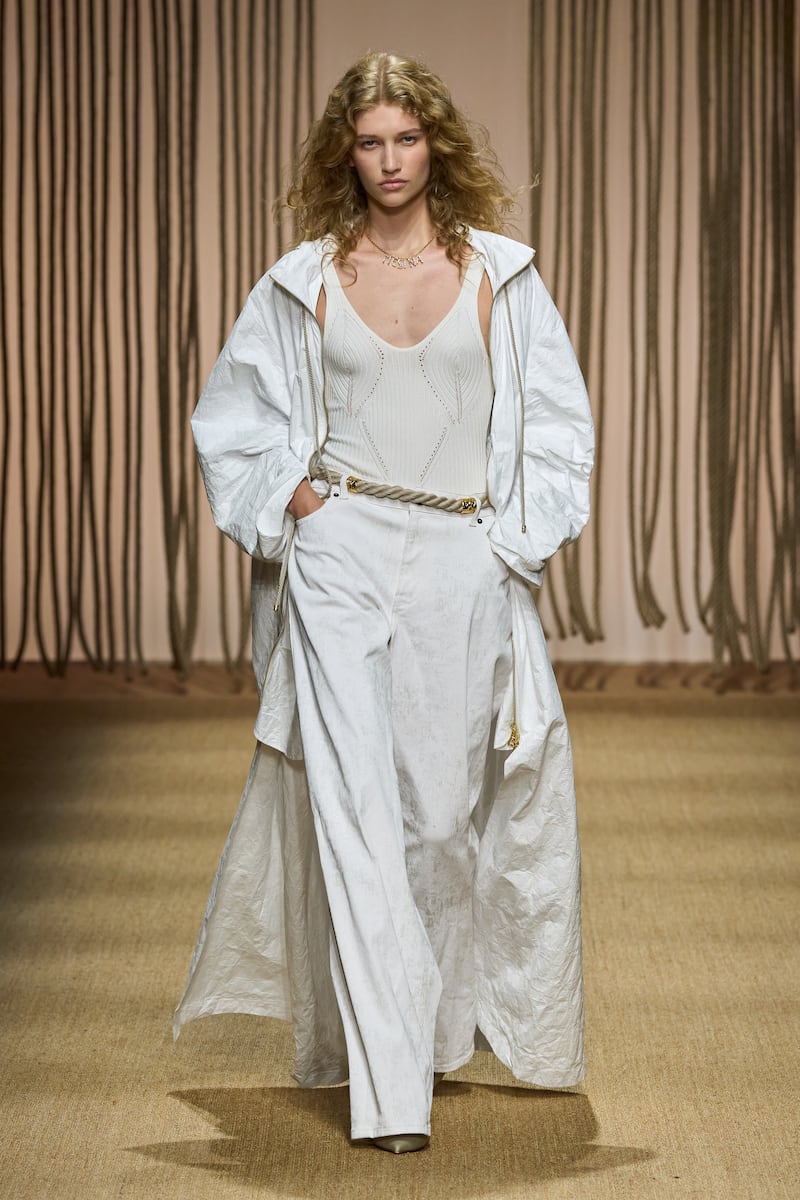
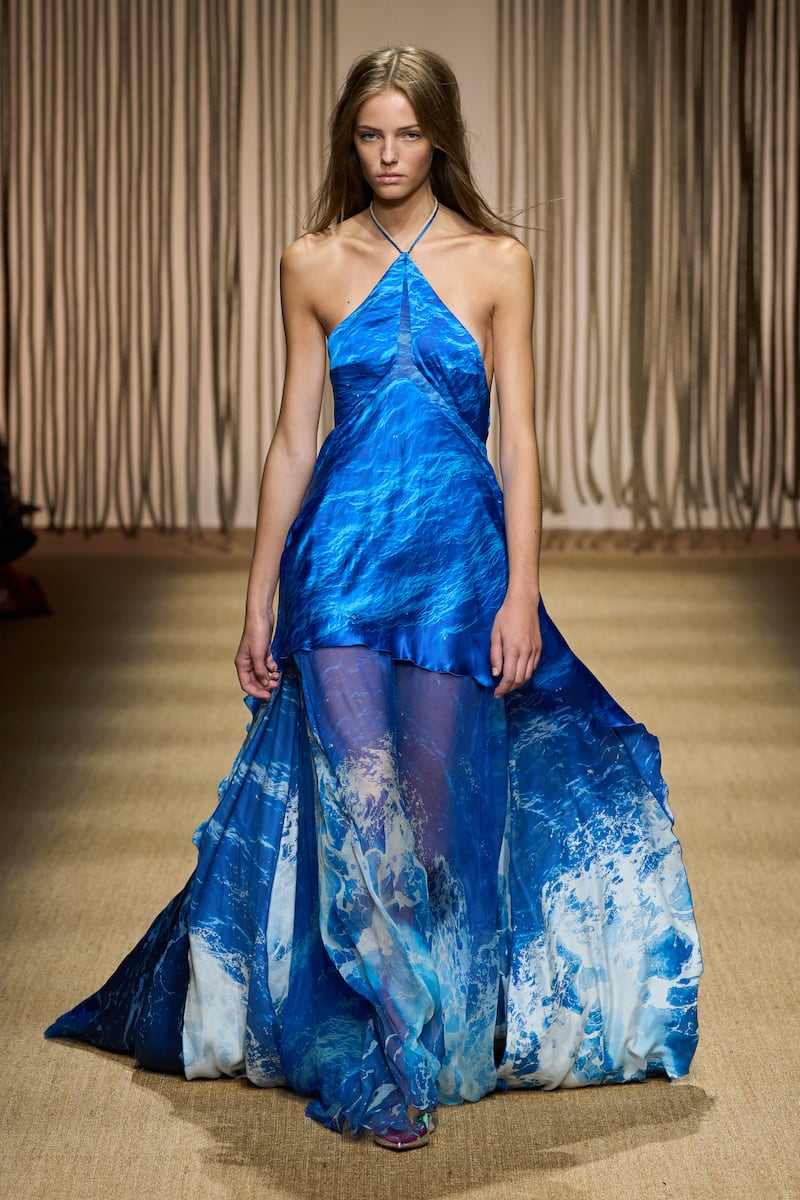
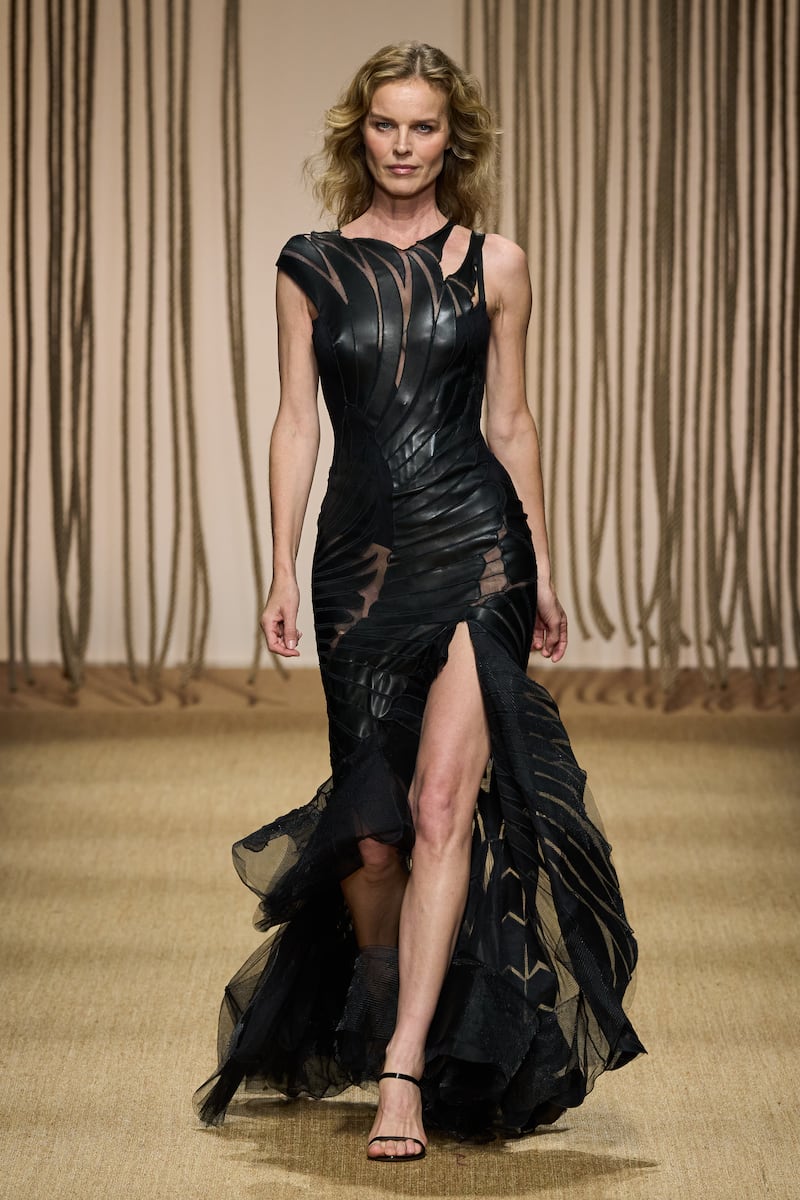
It’s not hard to imagine that all-seeing algorithmic eye being distinctly unbefuddled by Roberto Cavalli, so effortlessly would his signatures have distilled into a digital prompt. Admittedly, they were pretty fabulous in their time, but Fausto Puglisi, the feisty Sicilian who has assumed Cavalli’s mantle, is fully aware that everything has changed since then. Before his show on Wednesday, he acknowledged that he is dealing with a completely different customer, younger, freer, cooler. Puglisi astutely noted that, 20 years ago, the word “cool” didn’t have anything like the currency it currently enjoys in fashion.
But he has managed to strike a very successful balance between what was attractive about Cavalli then, and what it might have to say to women now. Puglisi has elevated the airy, wild, sensual essence of Cavalli and ditched the unsettling lechy element that would probably have got ol’ Roberto well and truly cancelled today. And he’s done it by looking to his own story. The opening passage of his show was inspired by his hometown Messina: a sequence of whites to suggest summer, rope trims (the backdrop for the show was a curtain of fishermen’s ropes), washed silks and velvets, net dresses, one studded with shells. Later, there were dresses printed with Mediterranean sunsets, and billowing chiffons printed with the cresting waves in the Straits of Messina. There was an appealingly raw, elemental feel to the clothes, with a sidebar of something more urban, like a lacquered reptile skirt suit. Fake, of course, because it isn’t the bad old days. “No fur, no feathers, no crocodile,” Puglisi declared. “That’s ancient glamour. It’s much more attractive to use paper.” Or raffia, which made a pair of intrecciata jeans printed to look like denim. “Couture,” Puglisi suggested cheerily.
Business is blossoming for Cavalli in hotspots like Las Vegas, Miami and St Tropez, where Roberto opened his artisanal denim shack 52 years ago. He died in April at the age of 83, which cast a reflective light on the show. Puglisi’s tribute was appropriately extravagant. Seven supermodels appeared in second-skin archive pieces from the early 2000s — feathers on Mariacarla Bosconi and Alek Wek, zebra print encasing Isabeli Fontana, Natasha Poly and Joan Smalls, Karen Elson in gilded snake, and Eva Herzigová in bias-cut black leather shading into a chiffon fishtail. Cavalli’s Girls in Cavalli’s Gowns were a reminder of what once made him great. And when Puglisi brought Cavalli’s widow Eva onto the catwalk to join them, that underscored why he’s the guy to make Cavalli great again.

